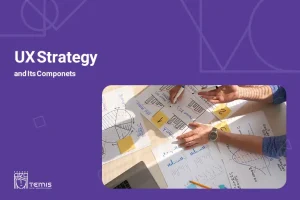Language is more than just words, it’s a mindset that shapes how others perceive your message. Have you ever stopped to think about what kind of tone and delivery are appropriate for each situation? This blog post will help teach readers about paralanguage to be savvy communicators!
you may like : Types Of Presentations: How To Choose The Right One For Your Audience
Table of Contents
Defining paralanguage
The tone of voice and volume change to show that we’re happy or angry. Pauses between words may be used as an opportunity for someone else in the conversation who’s on their phone (or other devices) where they’ll hear more than just what was said before without feeling like things have stopped moving altogether!
you may like : How To Memorize A Presentation In Eleven Easy Steps!
The different types of paralanguage
There are four main types of paralanguage:
Vocalists: The study of speech sounds is called phonetics. It includes things like pitch, volume, and rate to make sure that sentences flow smoothly with good grammar for a person’s voice or anyone else who may be listening in on the conversation as well!
Kinesics: The way you communicate with others has a lot more to do than just what’s coming out of your mouth. Your body language includes facial expressions, hand gestures, and even posture!
Proxemics: The study of personal space and its effects on communication is a very interesting topic that includes many different aspects. These include things such as distance, eye contact, and body language – all the way down to tone!
Haptics: Touching someone emotionally and physically can be an important way of showing that you care, which is why it’s studied in depth here. There are many different types of touching – like handshakes or hugs- so we’ll take a look at them all!
How to use paralanguage effectively
Now that you know what paralanguage is, you can start using it to your advantage! Here are a few tips:
– Vocalists can help you to make your voice stand out and be more memorable. For example, when giving an important speech or telling a funny story in which laughter is crucial for understanding the joke’s punch line-one should raise their volume slightly so it rings through clearly before delivering said content with all due force (and if need be: screeching).
– Vocalists can help you to make your voice stand out and be more memorable. For example, when giving an important speech or telling a funny story in which laughter is crucial for understanding the joke’s punch line-one should raise their volume slightly so it rings through clearly before delivering said content with all due force (and if need be: screeching).
– Proxemics is the study of how we interact with people and it’s important to create rapport. You can do this by standing closer, making eye contact, or speaking louder in order for your voice not to be heard by others around you while talking about something that interests them personally so they will listen closely enough until then being able to lower their guard just slightly because there are no safeguards against lies anymore-we’ve all been conditioned too well lately…
– Touch is an incredibly powerful tool that can create a sense of connection with others. For example, you could shake hands or give them a hug to show care and consideration for your loved one’s well-being in some circumstances.
you may like : How To Design Accessible Presentations For All Audiences
Examples of paralanguage in action
Let’s take a look at some examples of paralanguage in action.
– “I’m so sorry for your loss.” (vocalists: low pitch, soft voice)
– “Congratulations on your new job!” (vocalists: high pitch, enthusiastic voice)
– “I don’t want to talk about it.” (kinesics: crossed arms, averted gaze)
– “Please step away from me.” (proxemics: personal space, body language)
– “Thank you for your help.” (haptics: handshake, pat on the back)
The benefits of using paralanguage
Paralanguage is a powerful tool that can help you communicate more effectively. When you use paralanguage, you can:
– Emphasize important points
– Express emotions
– Build rapport
– Create a sense of connection
The potential downsides of using too much paralanguage
It’s important to use the right amount of paralanguage when you need it most. Too little and your message might be missed; too much can come across as aggressive or angry, while just enough helps communicate clearly with others.
This is why proper technique matters so much in vocal arts such as theater–the actors must know how far they should push their voices because there are always situations where more sound comes naturally (like excitement) but then again other times less will suffice depending on what kind emotion one wants readers/ audiences members to feel from certain words.
Presentation design services :
With our presentation design services, we can help you create an amazing visual representation of your business. They are designed by professional strategists and designers who understand how important it is to have visuals that communicate clearly and effectively while still being aesthetically pleasing. They’re also created using the most up-to-date data so they won’t become obsolete quickly like other types of marketing material might be.











